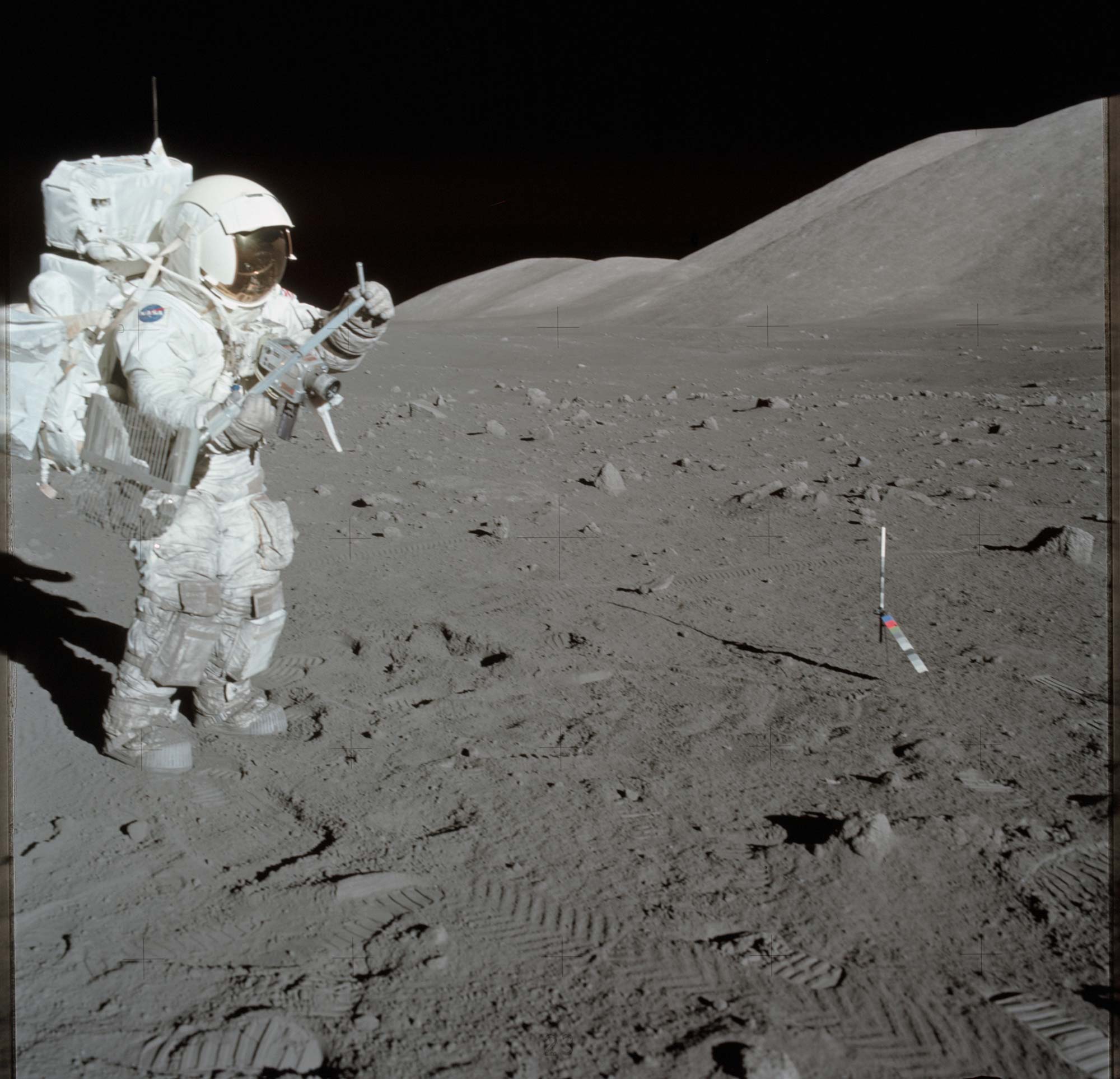
The only geologist ever to set foot on the moon thinks future lunar explorers should be a little more like him.
NASA and other space agencies should make sure that astronauts headed to the lunar surface get extensive training in field geology, Apollo 17 moonwalker Harrison "Jack" Schmitt and Arizona State University researcher Kip Hodges wrote in an editorial published today (Sept. 10) in the journal Science Advances.
"There are no plate tectonics on the moon and none of the erosional effects of wind, water and flowing ice that drive most of the surface evolution of Earth," the duo wrote in the piece, whose lead author is Hodges.
"As a consequence, the moon represents an incredible archive of the early history of the inner solar system, a billion-year period that included the stabilization of Earth into a world capable of sustaining life," they added. "We may never fully understand the evolution of environmental conditions in the inner solar system that eventually made the origin of life on Earth possible without a more comprehensive understanding of the deep history of our nearest neighbor."
Related: Apollo 17: NASA's Last Apollo Moon Landing in Pictures
Gaining that understanding will require more than merely collecting lunar samples and bringing them back to Earth, wrote Hodges and Schmitt, who are based at Arizona State University and the University of Wisconsin, respectively. Astronauts will also need to read the geology of the sample-collection site, so that data gleaned from the samples can be put in the proper context, they said. And this will require considerable training, given the particular challenges imposed by the lunar environment.
"No part of the ancient lunar surface is truly pristine; observable geologic relationships are complicated by billions of years of space weathering, the combined effects of cosmic ray, solar wind and meteorite bombardment," Hodges and Schmitt wrote. "The last of these is especially problematic, because meteorite impacts result in ballistic redistribution of material over great distances."
Get the Space.com Newsletter
Breaking space news, the latest updates on rocket launches, skywatching events and more!
The pair recommend that space agencies invest more time and money in devising innovative geology-training regimens for astronauts that take into account emerging new technologies, such as augmented reality.
And this work should begin soon, Hodges and Schmitt said. After all, NASA aims to send two astronauts to the moon's south pole by 2024, as part of a new program called Artemis. If all goes according to plan, Artemis will help establish a sustainable, long-term human presence on and around the moon by 2028. This effort will inform humanity's next giant leap — the crewed exploration of Mars, which NASA aims to achieve in the 2030s.
"With the next opportunities for lunar field science likely to be less than a decade away, the time is right for space agencies to support the establishment of multiple task forces — each including a broad spectrum of field scientists from academia, as well as the agencies themselves — to design a range of novel approaches to planetary field geology and to conduct extensive comparative experiments at complex terrestrial sites before incorporating any of them in mission planning and mission-specific training," they wrote. "Otherwise, we will have squandered an unparalleled opportunity to improve the geoscience we do on the moon and — eventually — on Mars."
Hodges and Schmitt also recommend including at least one "classically trained field geologist" — someone like Schmitt, who received a Ph.D. in geology from Harvard University in 1964 — on each crewed mission. Doing so would maximize the scientific yield, they wrote.
- Apollo 17: The Last Men on the Moon
- Can NASA Really Put Astronauts on the Moon in 2024?
- Moon Facts: Fun Information About the Earth's Moon
Mike Wall's book about the search for alien life, "Out There" (Grand Central Publishing, 2018; illustrated by Karl Tate), is out now. Follow him on Twitter @michaeldwall. Follow us on Twitter @Spacedotcom or Facebook.
Join our Space Forums to keep talking space on the latest missions, night sky and more! And if you have a news tip, correction or comment, let us know at: community@space.com.

Michael Wall is a Senior Space Writer with Space.com and joined the team in 2010. He primarily covers exoplanets, spaceflight and military space, but has been known to dabble in the space art beat. His book about the search for alien life, "Out There," was published on Nov. 13, 2018. Before becoming a science writer, Michael worked as a herpetologist and wildlife biologist. He has a Ph.D. in evolutionary biology from the University of Sydney, Australia, a bachelor's degree from the University of Arizona, and a graduate certificate in science writing from the University of California, Santa Cruz. To find out what his latest project is, you can follow Michael on Twitter.









